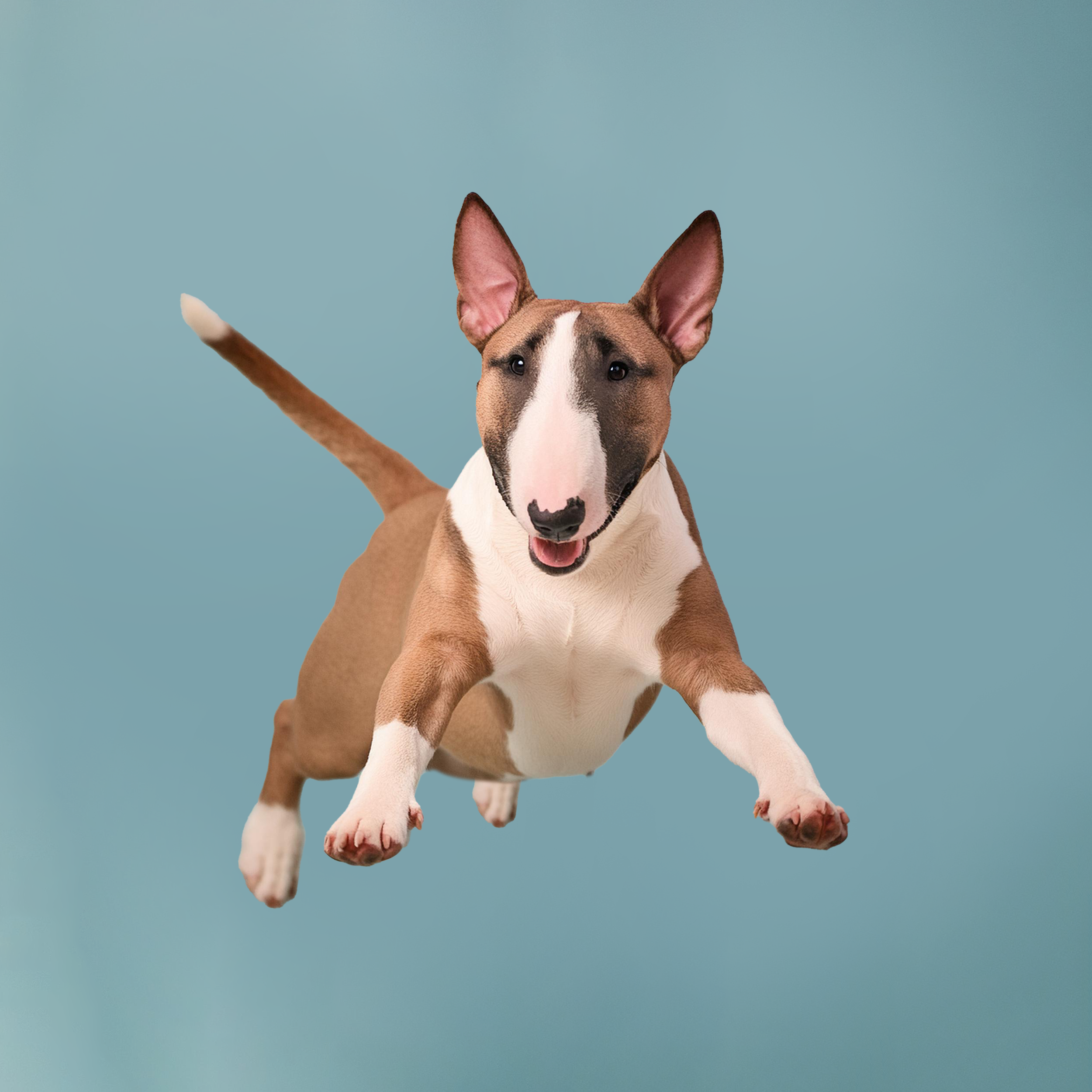Deafness
Due to genetics, a Bull Terrier may be born with a hearing problem. The gene responsible for white fur is often associated with the gene for deafness, and it is because of this that congenital hearing problems are most often seen in Bull Terriers with white fur. Bull Terriers with hearing problems need special care. You can manage the condition and prevent other problems caused by deafness by regularly visiting veterinarian clinics.
Acrodermatitis
Acrodermatitis is a skin disease characteristic of the White English Bull Terrier. Acrodermatitis is an inherited disease that causes skin damage, stunted growth, and other serious health problems along with a weakened immune system. Responsible breeding practices and declaring companion animals carrying the gene unfit for breeding are important to prevent the spread of disease.
Dry eye syndrome
Difficulty producing tears leads to eye irritation and vision problems. Eye dryness can be caused by Insufficient intake of water, yet, climate is often seen as a provoking occurrence for the issue. For instance, if you plan to spend the summer with your furry friend at the seaside, it is advisable to take extra care and keep your companion animal out of the heat as much as possible.
Bull Terrier eyes are also sensitive to dust. Therefore, we recommend that you refuse to walk with your companion animal in windy weather.
Pay particular attention to early symptoms of the illness, such as redness and tearing. It is advisable to visit a veterinarian as soon as these symptoms appear. As a competent parent, it is important to keep in mind that daily care and regular cleaning of the eyes with hygiene products specially designed for dogs are essential for the prevention of eye diseases.
Polycystic
Polycystic kidney disease is a genetic disease that causes the formation of fluid-filled cysts and loss of kidney function. To prevent the spread of the disease, it is necessary to identify the companion animal carrying the polycystic disease gene and declare them unsuitable for the breeding process.
A specialized diet may be necessary to support kidney function. Yet, it is recommended to perform the process only in cooperation with an experienced nutritionist. Blood tests, frequent veterinary check-ups, and competent companion animal care practices can help manage the disease and adjust the treatment strategy.

